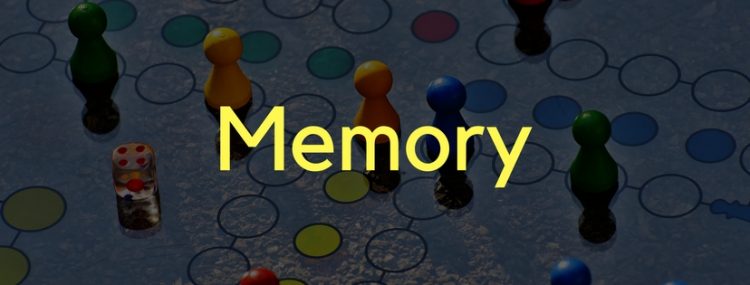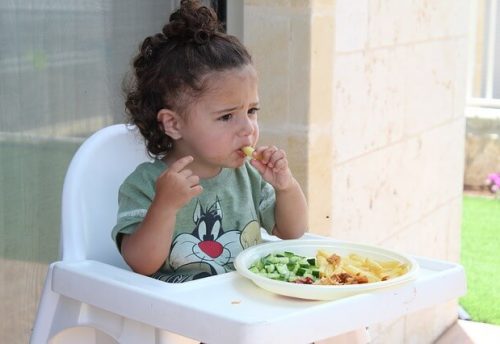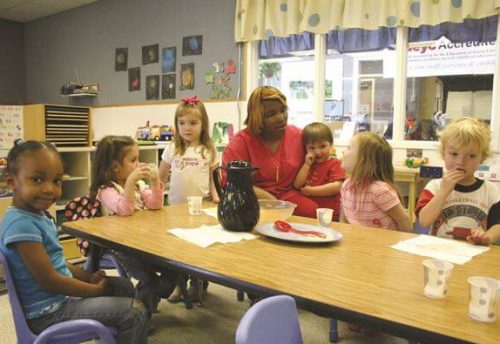
Memory
Hello! I just about to say something but I forgot… it is happening a lot these days, oh well it’ll come back in time perhaps. Awkward right? Don’t let your kids be forgetful and make them feel like they are abnormal or stupid.
Memory is generally like most physical skills the more we try to improve it, the more it actually improves.
As we grow older the fluid in or brain hardens and forms crystals which are better than fluids at retaining memories, this was just a general fact.
You can’t go trying to harden your child’s brain fluids now, can you? Don’t worry I’ve got you covered. Here are 12 ways(includes games) to help improve your child’s memory.
1. Try these two simple games at first.
- Coin Match
Set up a line of coins. Start with 3 and work up to 10. Place the coins in a random pattern of heads or tails. The child stares at coins for 10 seconds. Parent removes coins and hands to a child who attempts to arrange them in the same order. Make this more difficult by using different types of coins. - Three Cups
Line up three paper cups. Place a small object under one cup. While child watches closely, switch the cups back and forth into new positions. Ask the child where the object is.
2. StoryTelling Memory Games
These games might not tell a literal story, but they are based on memorizing chains of events or images which are connected to how we process stories.
These memory games are fantastic as on the go boredom busters.
Retell a story.
There are several ways to approach this story game. When you are on the go, start to retell a favorite story. Variations include:
• Taking turns with sentences, or plot points.
• Omitting sections of the story and asking kids what you forgot.
• Have the child retell the story from memory.
Storytelling word by word.
Start a story with a single word. The next player says that word and builds the story with another word. The next player says the first two word and ads a third, and so on. Alternatively, you can build sentence by sentence. Tip: keep sentences short.
3. Image Memory Story.
Stare at an image in a magazine for 10 seconds. The child makes up a story incorporating as many details from the image as she can.
If she gets stuck, the parent can ask prompts as questions, such as “what blue object did you see?”.
Make sure to keep the picture comical and interesting, this way the children will pay more attention to the vivid details in the picture.
4. Sound Chain.
One person starts a pattern using snaps or claps. The others must repeat the pattern. The first person then adds on to the pattern and the others must repeat this longer pattern.
Play continues until no one can remember the pattern.
5 DIY paper plate memory games. Make your own matching memory game with an inexpensive package of paper plates.
Simply create matching pairs of plates. Ideas include:
• Letters. Draw an upper case letter on one plate and the corresponding lower case on another.
• Numbers. Draw sets of numbers. To make it more challenges draw the numeral on one plate and the quantity on another. So the numeral 4 would be matched to a plate with 4 dots, for example.
• Shapes. Paste on colored cutouts of shapes.
• Animals. Cut out photos from magazines. Photos don’t necessarily have to match.
• Rhyming words and images.
5. Classic Memory Board Game.
Play classic board games with your children this is a very nice way to boost your child’s memory. Try games like the following:
Trivial Pursuit
Our brains are filled with knowledge about many different subjects and topics. Trivial Pursuit attempts to pull this half-buried information from our memory banks for use in gaining the advantage on your competitors. In recent years, there have been many themed variations on the traditional game so players can focus on specialized topics they enjoy, such as “Star Wars” or sports.
Memory
This children’s game is all about matching game pieces by remembering where they are placed face-down in rows. As an adult who has played this game with children can attest, they are usually much better at it than their older counterparts, but then, they don’t have to remember doctor’s appointments or when the bills are due.
6. Rhyming Games
In the same way that singing songs are great memory practice, so is rhyming. There are lots of ways you can build their memorization skills at the same time you are getting in some high-quality literacy learning. See these rhyming games for kids. Growing Book by Book is also an incredible resource for rhyming games for toddlers.
7. Memorize A Poem
There is little more satisfying in life that reciting a poem you have memorized. Take a small poetry book with you on the go to work on memorization while you are out. Or, memorize the poem at home and take turns reciting poems to entertain the world while you are standing in line at the grocery store. See tips for memorizing poems with kids, and classic poems kids can memorize.
8. Blocks – Build it up!
Expose your child to blocks of different colors and sizes — and that’s it! Let your child explore the blocks and let their imagination run wild.
All aspects of your child’s development are exposed including shape/ color recognition, creativity, spatial awareness, and so much more.
You can start off with basic color and shape blocks for younger children and then upgrade to Lego’s or abstract building blocks for older children.
Create simple patterns with blocks, have your toddler try to copy the patterns. This is a simple way to help your child observe patterns.
9. Puzzle
There are many different kinds of puzzles to choose from: tangrams and board puzzles for younger children, and older children (and adults) can indulge in Scrabble, Sudoku, crosswords, logic puzzles and even Rubik’s cubes!
At any age, puzzles are sure-fire brain teasers! Line up popsicle sticks in a row, stick a copy of a family photograph on the popsicle sticks.
Using a cutter, cut between the popsicle sticks. Help your child line the popsicles and recreate the photograph.
10. Removing Tape Game – Brain Booster!
Concentration is key while playing most games. It’s an important brain-building activity to develop on. But, children are so easily distracted. Here’s a fun brain sharpening game for the little ones.
All it takes is some masking tape and a flat surface. Use this brain game to help enhance your toddler’s concentration. Toddlers love feeling, scratching and pulling, and this activity uses all of those actions! On a flat surface, table or notebook, stick strips of masking tape. Make sure the tapes overlap. Demonstrate to your toddler how to remove the tape one at a time by scraping the ends with your fingernails.
11. Phonic Fun
This activity helps your child (and you) to think quickly, develops communication, improves decision-making skills and builds confidence.
Everyone playing takes turns to continue with consecutive letters of the alphabet, and fill in the following I am going (blank) and I’m taking (blank).
I am going to Aunt Anita’s house and I’m taking my apple. I am going to Bombay and I’m taking the boat.
Have fun while playing these! Don’t be result oriented and enjoy the process, your children will gradually improve.
Well, these were the few Memory Games that can help your child a lot in development.
If you like it, share it with your friends.
Need help?
We are the preschool franchise in India. Contact Us, message us for any issues. We will love to help you.





Leave a Reply